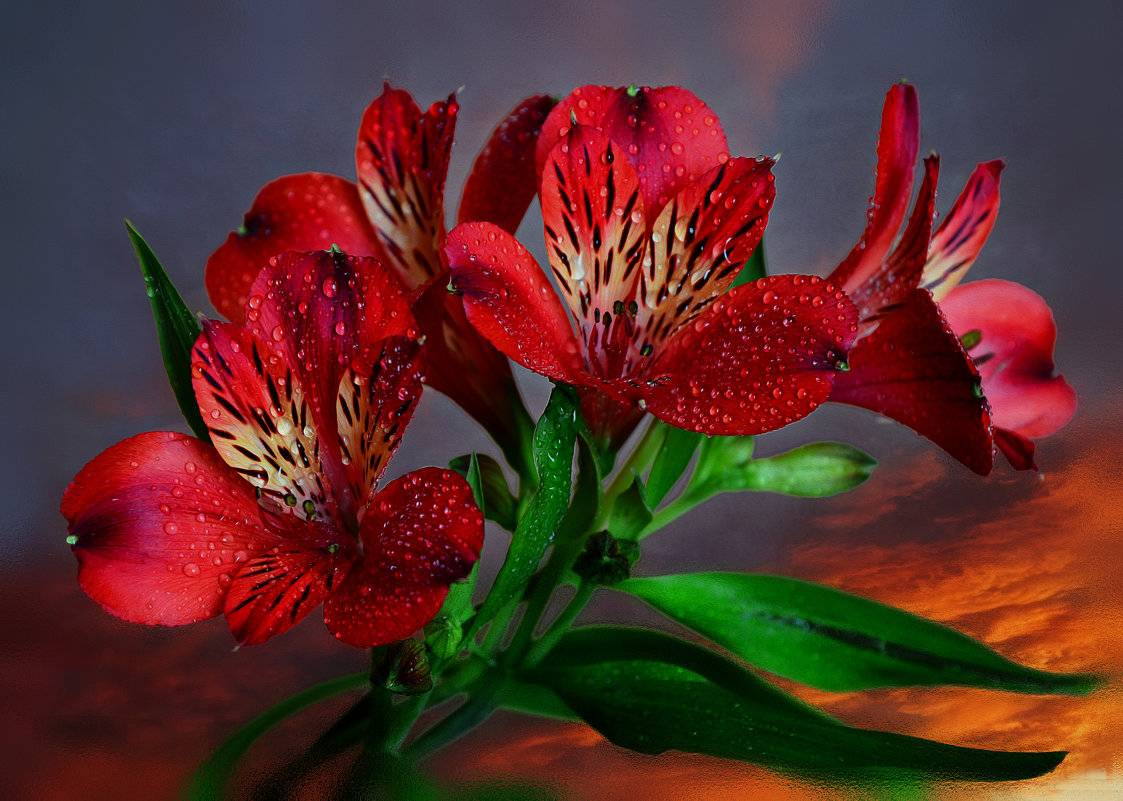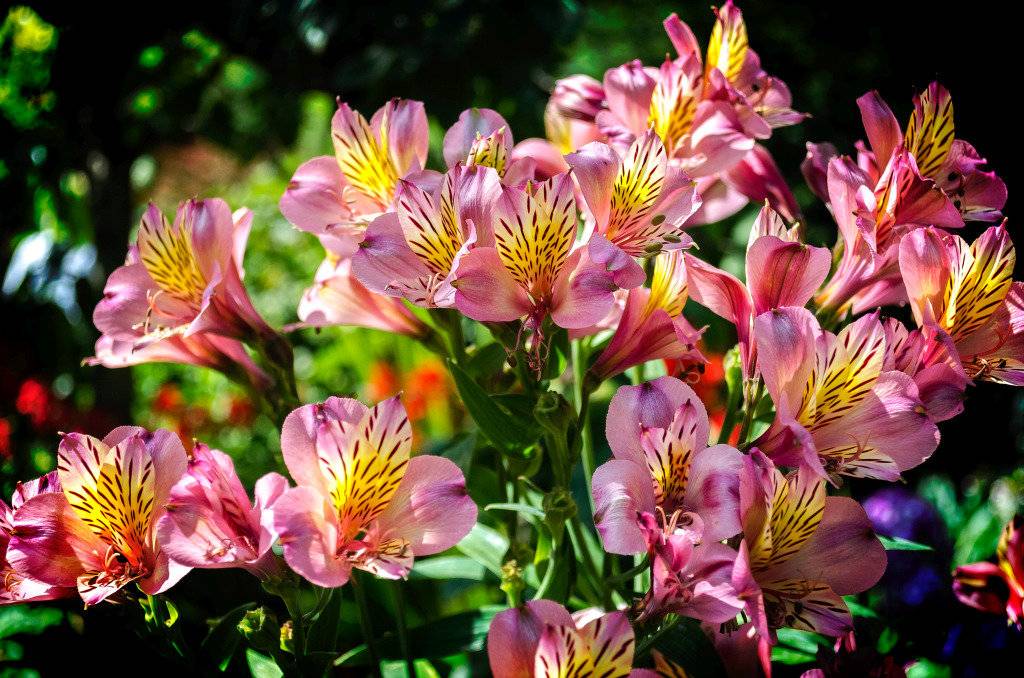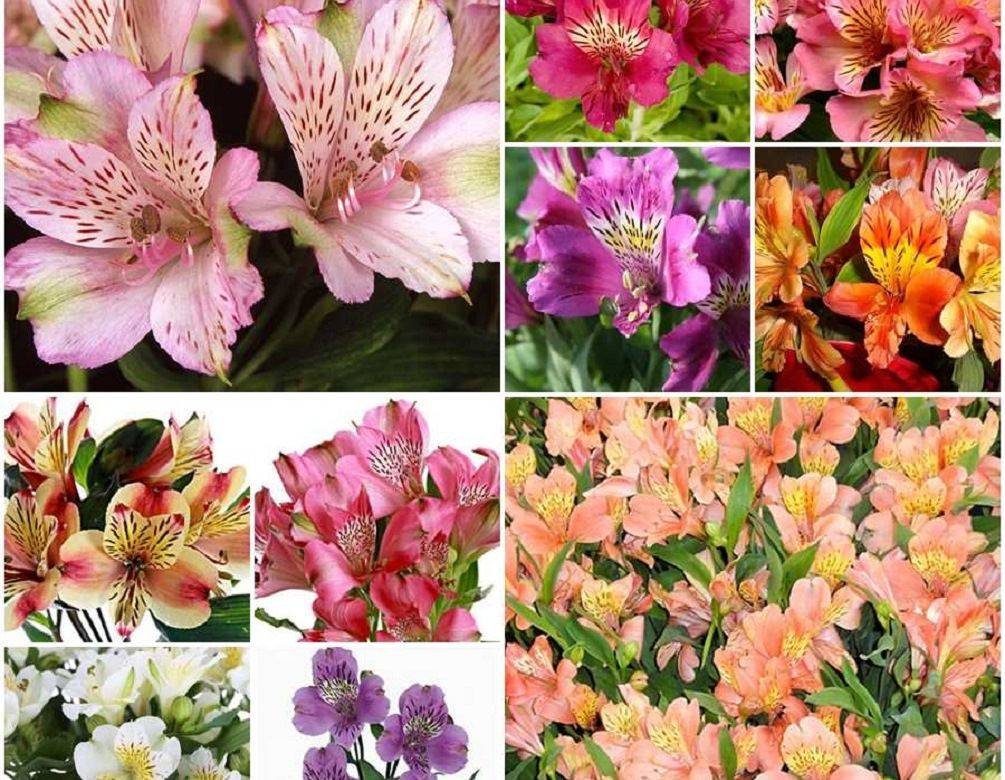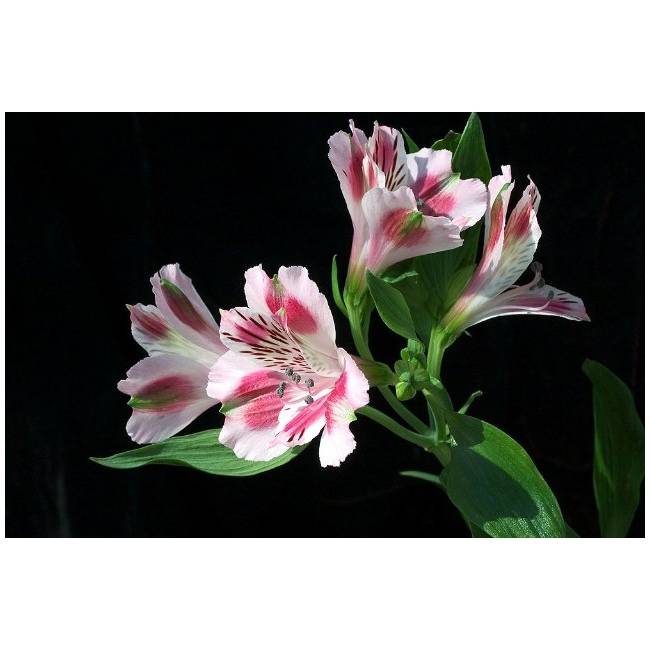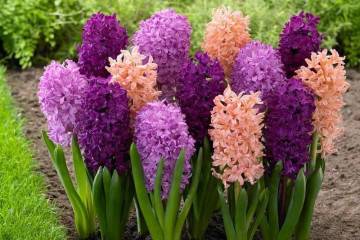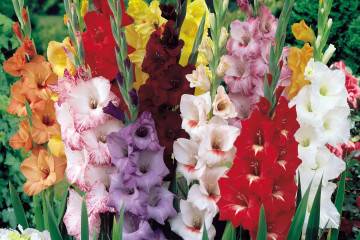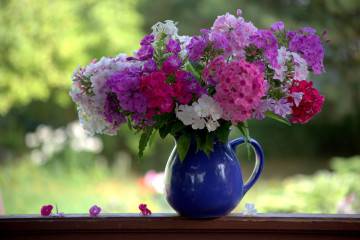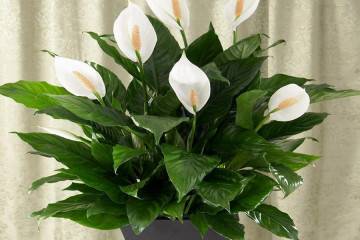Alstroemeria flowers
Content:
Alstroemeria are incredibly beautiful flowers, they are also called the Peruvian lily or the Inca lily. Alstroemeria fascinates with its bright colors and unusual shade of leaves. Cut flowers are able to keep fresh for a long time. What kind of flower is such alstroemeria, planting and care in the open field, breeding methods - all this will be described in detail below.
Alstroemeria or Peruvian lily
Alstroemeria flowers in their natural environment can be found in Peru and Brazil, therefore they are also referred to as the Peruvian lily. Most of the species are perennials, with the exception of the annual A. graminea. Differs in long flowering from several weeks to a month. Due to its varied colors, it is often used in landscape design.
The origin, description and appearance of alstroemeria
Alstroemeria are flowers that require minimal maintenance. Although most species grow in the Andes, only one cultivar, Alstroemeria peruviana, is able to survive the cold Russian winters. Poor frost resistance does not allow growing alstroemeria in the north.
In ancient times, alstroemeria was called the flower of the Incas. The tribe believed that the plant has magical properties, attached great importance to it. Bouquets with alstroemeria were placed indoors, it was believed that flowers protect from enemies and evil demons. The Peruvian beauty gradually migrated from South America to the USA and Canada. Over time, she won the hearts of European gardeners.
What does alstroemeria look like
Depending on the variety, alstroemeria is a flower that reaches two meters in height. Judging by the characteristics, the leaves are green, smooth, alternating and twisted on petioles. The flowers are quite large. The bud consists of six petals, about five centimeters long. Inflorescences are of various colors. The petals on top have speckled and striped veins. In the middle of the bud there are three pairs of stamens.
Types and varieties
Thanks to selection, the world saw about 190 varieties of alstroemeria. All species differ from each other in the color of the buds and the shape of the leafy plate. Individual leaves turn around their axis during growth and can be directed upward with the bottom plate.
Among the famous varieties are:
- White alstroemeria. Among the varieties, Alicia can be distinguished. Outwardly, it resembles an ordinary chrysanthemum. The petals are painted in a snow-white color with a barely noticeable pinkish tinge. White Wings is another snow-white variety up to two meters high.
- Alstroemeria pink. The Regina variety is a bright representative of the pink species. Planted in the garden and flower beds, blooms after June 20. Alstroemeria Brazilian has a high stem (up to 2 meters). Petals are elongated, pink or burgundy.
- Alstroemeria is red. This type is mesmerizing with chic inflorescences. Scarlet petals are covered with small yellow specks.
- Alstroemeria is purple. Varieties of this type are used to decorate bridal bouquets. It is a short and compact shrub 20-25 cm in height, blooms in late spring.
Alstroemeria transplant after purchase in open ground
To grow a flower, you need to choose the right place: it must be sunny and free of drafts. The quality of the planting material plays an important role. Before buying a seedling, you must carefully inspect it, it should not be damaged or signs of disease.
What is needed for planting alstroemeria
The Peruvian Lily is a thermophilic plant suitable for home cultivation. Before planting a flower, you need to choose a place for it.
It must be sufficiently lit. In the shade, the plant will wither. Do not plant a flower near trees and buildings.
The soil should be loose and light, with a neutral or slightly acidic reaction. Soil with high moisture content will not work. The process of decay will begin in the root system and the flower will disappear.
An ideal planting site would be the eastern or western part of the site. Direct sunlight can burn leaves. The selected area must be protected from strong winds and drafts. At lunchtime, it is advisable to shade the bushes. In the fall, before planting the plant in the ground, the site is dug up and minerals are added.
Step-by-step planting process
After the soil is prepared, and the place is chosen, you can proceed to planting. Step-by-step instructions will help with this:
- Dip the roots of the seedling in a clay solution.
- Place drainage and compost at the bottom of the pit.
- Place the seedling in a hole 40 cm wide and up to 60 cm deep. Fully spread the roots over the surface of the hole.
- Then fill the hole with soil. When planting, carefully compact the soil around the seedling.
- After planting, water the young alstroemeria.
- Then loosen the soil, for this it is necessary to collect the earth around the bush, and then mulch.
Reproduction of alstroemeria
You can propagate the Peruvian lily both in your garden plot and in a greenhouse.
Growing from seeds
Growing alstroemeria flowers from seeds is a laborious process. After the flower has faded, a seed capsule is formed in place of the bud. As soon as it turns brown, seed collection begins. The planting material must be dried. In autumn, sow in open soil and sprinkle a little with earth. In the spring, when the sprouts sprout, they are transplanted to a permanent place.
The second option: growing seedlings at home. The plant is planted with seeds from January to February. For this, take a suitable container. Seeds are sown in several pieces on the surface, lightly sprinkling them with earth. At the end, cover with foil. Once a day, the seedlings are allowed to breathe. The first shoots will appear in 14 days. Then they will need to dive into a larger container. And closer to summer, plant it in open ground.
Reproduction by dividing rhizomes
This propagation method is suitable for most plants. The main condition is that the flower must have more than four bulbs. You need to propagate the plant carefully.
For this, the lily is carefully dug up. The roots are cleared of the earth. Then cut so that there are three pseudobulbs on each half. New bushes are planted in a new location.
Alstroemeria care in the Middle Lane
Success in the care and planting of alstroemeria in the open field depends on a competent approach: on the choice of a place, correctly selected soil and feeding, adherence to the rules of watering and temperature conditions.
Watering mode
Watering the plant is necessary depending on the season. In the spring and summer during the active growing season, the lily is moistened twice a week. You cannot fill the bush. Watering is carried out once a week.
The soil around the plant should always be slightly damp, about 2 cm deep.
Each watering ends with loosening of the soil. To reduce moisture evaporation, sawdust or wood bark can be used.
Top dressing
The plant is fed every 14 days, during active flowering. Ornamental varieties need fertilization two or three times a month.
- In the spring, nitrogen-containing fertilizers are applied to the soil.
- During the budding period, mineral complex fertilizers are used.
- Before flowering itself, potash or phosphate fertilizers are added to the soil.
- In the fall, after the inflorescences have faded, the plant is fed with potassium and superphosphate.
Top dressing provides long flowering, so you should not ignore it.
Features of care during the flowering period
In the summer, when growing an alstroemeria flower in the country, it needs constant weeding. Weeds not only worsen the appearance of the site, but also harm the plant.
Weeds are a habitat for many pests and insects. They infect the plant and slow down its development. After weeding, the flowers are watered abundantly and the soil underneath is loosened.
This process provides oxygen to the root system. During flowering, the plant must be watered and fed regularly.
Features of care during the rest period
Inexperienced gardeners do not know how to properly grow alstroemeria at home. When sending the Peruvian lily to rest, it is fed, pruned and covered (if the winter is warm).
In cases of growing up and a sufficiently developed root system of the flower, preparation for wintering can be greatly facilitated. To do this, you can make additional shelter using coniferous branches, leaves and sawdust. If the winters are cold, the Peruvian lily is dug up for the winter and taken to the home basement or cellar.
Preparing for winter
If lilies are to hibernate in the open field, they must be protected from freezing. To do this, you need to organize a shelter:
- Tie all the branches of the bush so that snow does not get inside the crown.
- The soil near the root must be covered with mulch.
- Above the bush, build a hut of coniferous branches.
The flower bewitches with delicate purple, yellow, pink flowers. A freshly cut bouquet in a vase can be placed in the bedroom - according to legends, it will bring a calm and serene sleep. The cut flower will also be a great addition to the interior. For domestic gardeners, dwarf and medium varieties are suitable. If you organize competent care, the Inca lily will definitely become a stylish decoration of landscape design.
